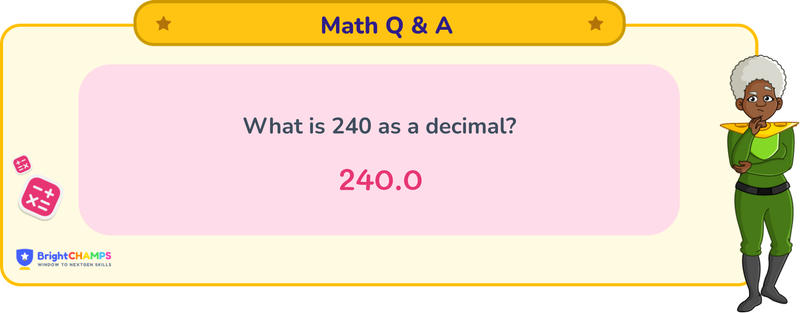
 260 Learners
260 LearnersLast updated on 5 August 2025

240 as a decimal

Decimal conversion is a straightforward process. To understand how 240 appears as a decimal, one must comprehend the basic concept of whole numbers and decimals. A whole number is an integer without fractions or decimals, while a decimal represents a number that may not be whole, using a decimal point (.) to separate the whole part from any fractional part. The digits to the left of the decimal point represent the entire number, and those to the right represent the fractional part.
What is 240 as a decimal?
 Answer
Answer
240 as a decimal is simply written as 240.0. It is a terminating decimal, meaning it does not repeat infinitely.
Explanation
The number 240 is already a whole number. In decimal form, whole numbers have a decimal point followed by a zero, indicating there is no fractional part.
Step 1: Recognize 240 as a whole number, which means it is an integer without any decimal or fractional part.
Step 2: To express this whole number as a decimal, simply add a decimal point followed by a zero, resulting in 240.0.This method shows that 240 is equivalent to 240.0 in decimal form.
Since there is no fractional part to consider, it is a terminating decimal.
Important Glossaries for 240 as a decimal
- Whole Number: A non-negative integer without fractions or decimals.
- Decimal: A numerical representation that uses base ten and a decimal point to separate the whole part from any fractional part.
- Terminating Decimal: A decimal that ends and does not repeat indefinitely.
- Decimal Point: A dot used in decimal numeration that separates the whole number from the fractional part.
- Integer: A whole number that can be positive, negative, or zero, but not a fraction.




